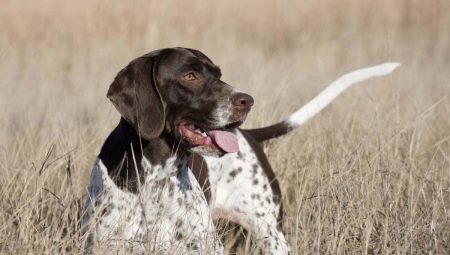The English hunting breed of dog - Pointer for centuries has been an integral companion of the British nobility. The magnificent exterior typical of cops to become, high intelligence and aristocratic behavior make her a welcome participant in trials and competitions at the most prestigious shows and exhibitions. Born hunters, pointers are transformed, you just have to smell the game. But not all lovers of this breed know everything about their dogs.
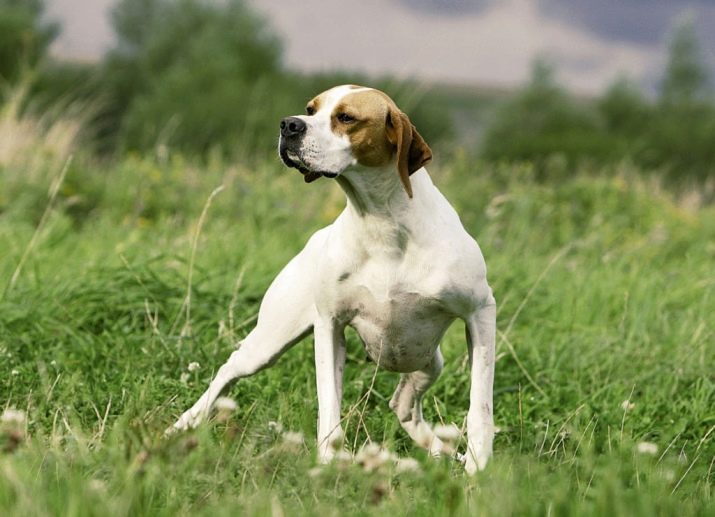
What does the breed standard look like, and when was it adopted? What dogs were used to create the pointers? Today, the breed is no less popular due to its performance characteristics. And being used as companions, these dogs demonstrate miracles of nobility and insight, literally guessing the wishes of the owner. So who is he - a pointer: a tireless hunter or a decorous companion of a British gentleman?
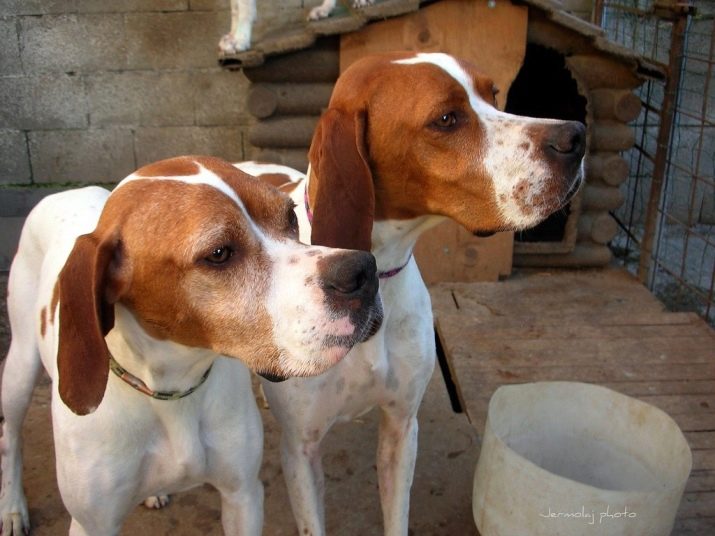
Description
Poynter is a breed of hunting dogs, known to English breeders since the XVII century. Among her ancestors are the Spanish Pointing Dog, Foxhound, Greyhound, Greyhound, Bulldog and Setter. In the course of breeding work, the goal was set - to bring out the ideal gundog, capable of equally good walking along the air and ground tracks. The first samples were obtained with the predominance of the blood of English hounds, including hounds in the blood. But the livestock obtained did not differ in good character - they managed to correct the situation through the use of setters in breeding work.
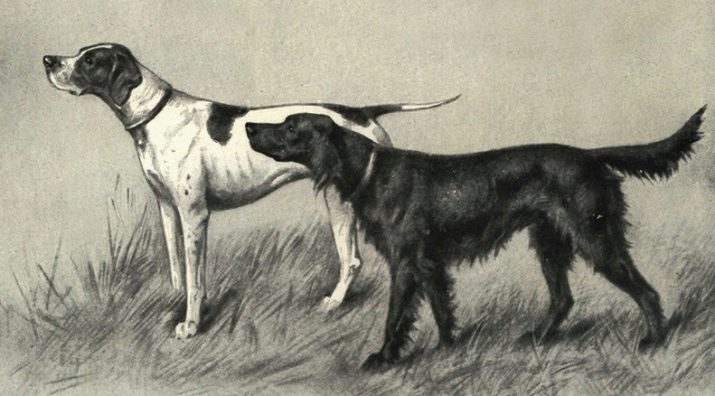
The breed standard clearly and in detail describes what a modern English pointer looks like.It is worth noting that in the FCI list, the breed has officially assigned to it No. 1, and the latest changes to the document were made in 2009. According to the external characteristics of the pointers, they are often compared with the Kurzhaar and Drathaar - smooth-haired and wire-haired cops of German origin.
According to the current standard, dogs have a height at the withers reaching 61-69 cm, body weight is not strictly regulated, but obvious signs of obesity are excluded. Desired weight - no more than 25-34 kg.
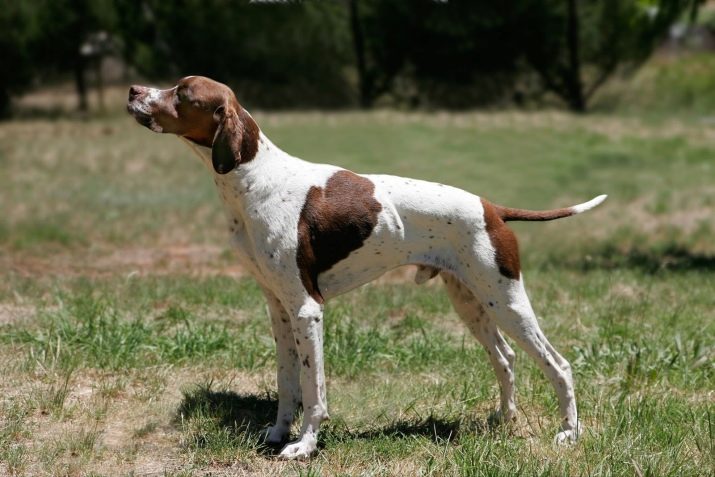
Among other requirements, the following breed characteristics can be distinguished.
- Build proportional, strong, dry, with a straight back, slightly convex lumbar. The chest is well defined, deep, passes into a long oval neck, suspension or excessive bending is not reported to be present. The scruff is well defined, the shoulders are wide.
- Limbs of the direct set, more muscular at the back. During the movement, the course is smooth, the gait should not demonstrate intermittent movements. Ligaments on the forelimbs are well defined, visible in the stance and in motion. Paw pads are characterized by elasticity, pigmentation in tone with the nose.
- The tail is long enough, strong, without too much grace. No knots or bends allowed. Normally, it is carried at the level of the spinal line, during movement it is shifted in the horizontal plane.
- The head is voluminous, with a convex forehead, pronounced occiput. The furrow is well defined, the foot is not smooth, but rather smooth, without a sharp transition. The muzzle is slightly upturned, with a wide nose - its color should be dark brown or lighter with a yellow shade of hair. The breed is characterized by a scissor bite with a complete set of teeth.
- Eyes of the right set, proportional, pigmentation of the eyelids to the tone of the nose. An excessively dark shade of the iris, an evil or aggressive expression of gaze is not allowed. The main color palette is brown.
- High-set ears, down, on the cartilage retain mobility. The tip is moderately sharp, a slight forward turn is allowed, like a rose petal.

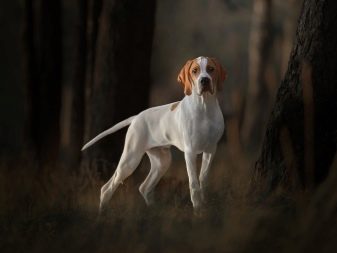
According to the requirements of the standard, pointers should have a graceful, harmonious, but not too elegant physique. Malformations include sagging or a hump in the back, malocclusion, heterochromia, canted croup, or wedge-shaped head.
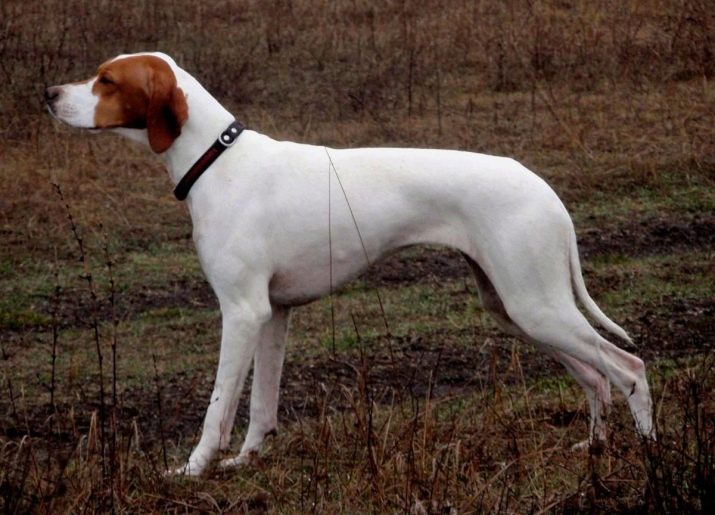
Coat and color
English pointers are smooth-haired dogs with no undercoat. The rest of the hair is dense, well adjacent to the skin. The coat protects the dog’s body from hypothermia, forms a water-repellent coating. Its length is uniform and does not change throughout the body; on the muzzle, the hairs are shorter.
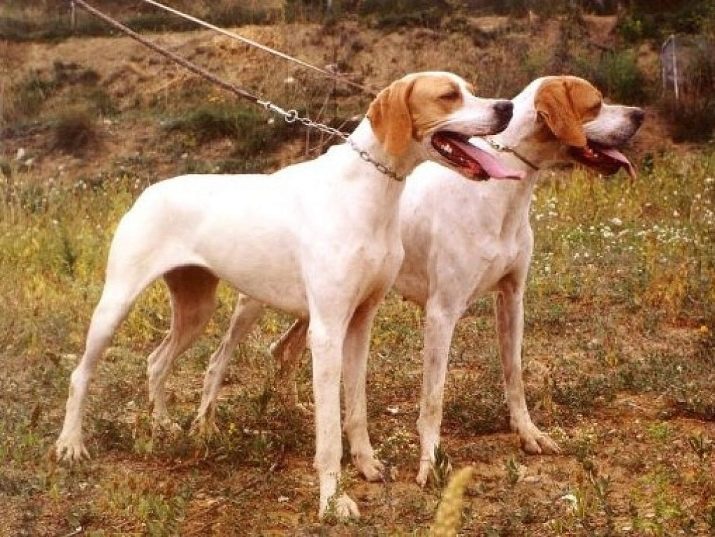
In its pure form, puppies of black color practically do not occur, like the white variety.
Although they fit into the norms of the standard, they are considered pedigree, but only in the absence of contrasting spots on the skin. Basically, pointers in pinto colors with a white or color background and spots of black, brown, yellow and red shades are born in the litter. Tricolor is also acceptable, but this coloring of wool is almost completely removed from everyday life, it is extremely rare.
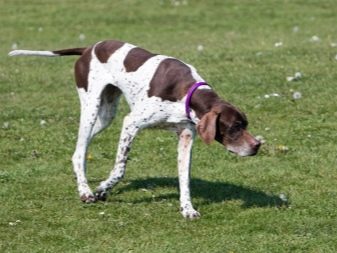
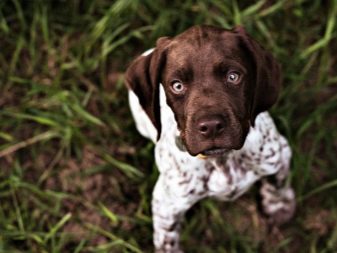
Advantages and disadvantages
Dogs of the English Pointer breed generally receive positive reviews, are considered a good choice for hunting and home maintenance. Among the advantages of the breed are noted:
- congenital hunting instincts;
- low level of aggression;
- high intelligence;
- excellent socialization - get along well with other animals;
- visual appeal;
- ease of care;
- good character.
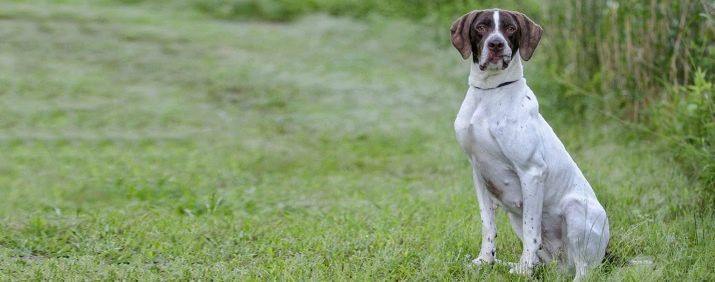
Deficiencies are also present. It is customary to relate to them a strong attachment to a person, creating difficulties in situations when the dog is left alone. Not a big cop and for keeping in a city apartment. In winter, the dog can freeze, requires additional heating using overalls. Poynters need long walks - they are not suitable for people with low needs for physical activity.
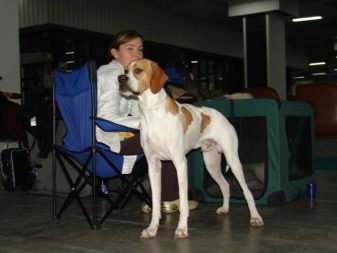
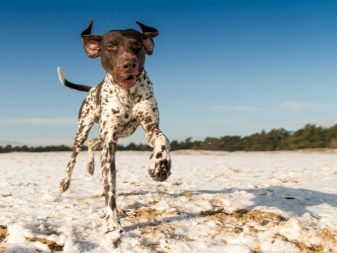
Character Features
By their nature, pointers are athletes who are ready for much for the sake of achievements. They are reckless, active, have a virtually inexhaustible supply of energy.
Such a dog necessarily needs physical activity, quite intense, work in the field.
With a high level of activity, they maintain a good mood and optimal physical shape.
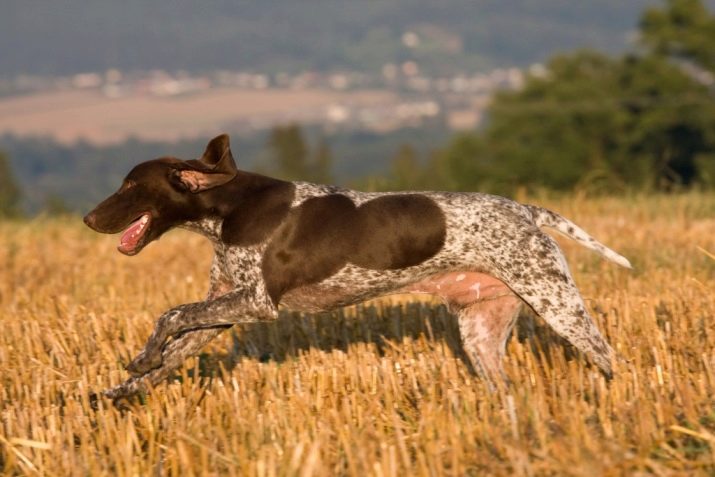
Poynter - a companion dog, in dire need of human society. Representatives of this breed are strongly attached to the owner, yearn for him, barely tolerate loneliness. Already in puppyhood, you need to gradually accustom the dog to independence.
The affectionate, good-natured character of the English pointer makes him an excellent pet for family maintenance.
An animal of any gender gets along well with children, in the absence of danger it is friendly to strangers. Cowardice and aggression in these dogs are considered developmental defects, such are carefully discarded throughout the entire breeding work.
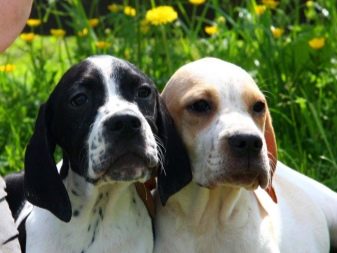
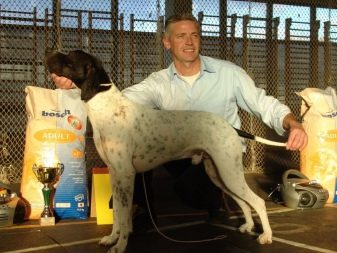
In hunting pointers, leadership qualities are highly developed.
It is very important from the very beginning to direct their development in the right direction, otherwise the dog has every chance of becoming a home tyrant.
It is better to raise an animal in a light, unobtrusive way. If the dog does not start for hunting, you should find something for her to regularly splash out energy. This may be a kind of sports, accompanying the owner in his walks or sports training.
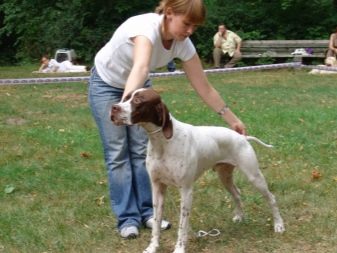
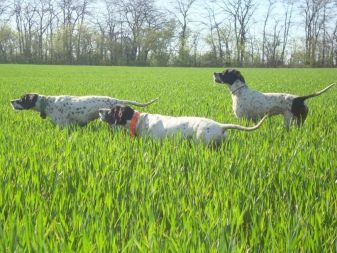
Conditions for keeping
Keeping dogs of the Pointer breed requires the pet to be provided with sufficient space and freedom of movement. The best option would be a country house or a cottage with a fenced yard. The chain content is categorically not suitable, in the aviary the animal will also be deprived of movement, will yearn for the owner.
In a city apartment, the pointer should only be started if there is a spacious area for free walking nearby.
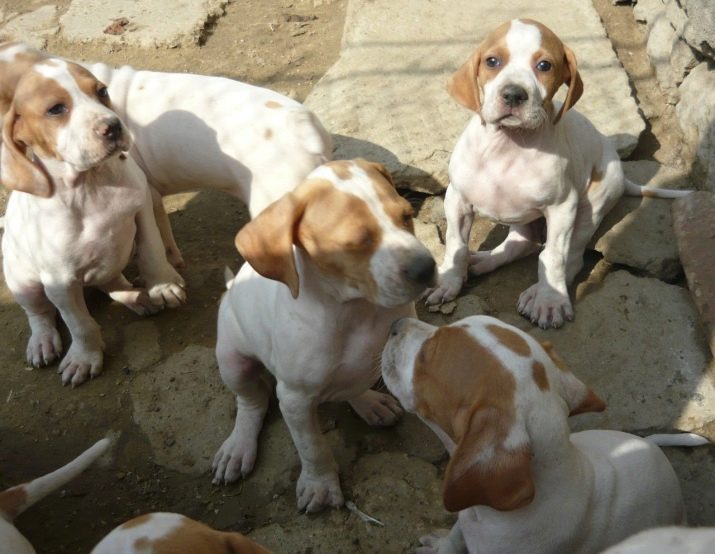
Dogs of this breed need litter of medium hardness, located in the visibility range of the owner. It is worth considering that the animal quickly develops sofas and chairs. Letting your puppy choose them as their place, one should not expect an adult dog to deny himself the pleasure of using this particular object for sleeping and relaxing.
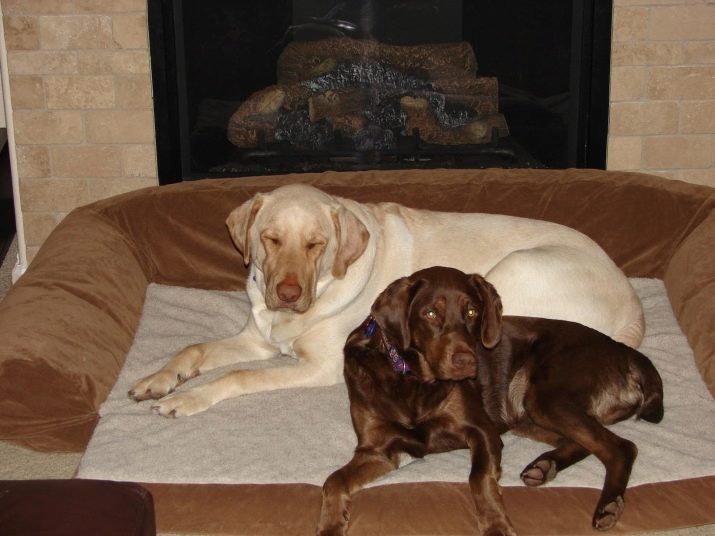
What to feed?
The power of the pointer must take into account its high needs for replenishment of energy reserves. Ready-made feeds make it easy to choose a diet. It is worth choosing specialized products for large breeds belonging to the class of super-premium or holistic. Brands will do Arden Grande, Eukanuba, Biomill. Adult dogs are fed twice a day. When eating dry food, you must give your pet free access to clean and fresh water.
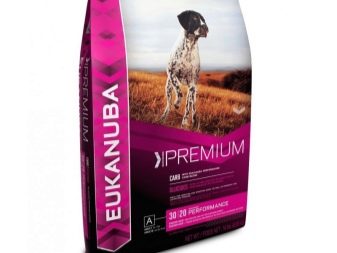
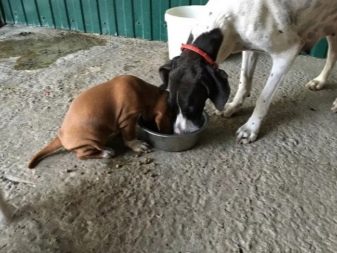
When eating natural products, pointers should receive enough protein - in the form of natural meat of mutton, horse meat, beef, poultry (chicken, turkey), boiled ocean fish. Among the sources of useful substances include Fresh eggs, natural cottage cheese. Animals get carbohydrates due to cereals - oat, buckwheat, rice The source of fiber is vegetables - beets, carrots, cabbage. They are given fresh or boiled.
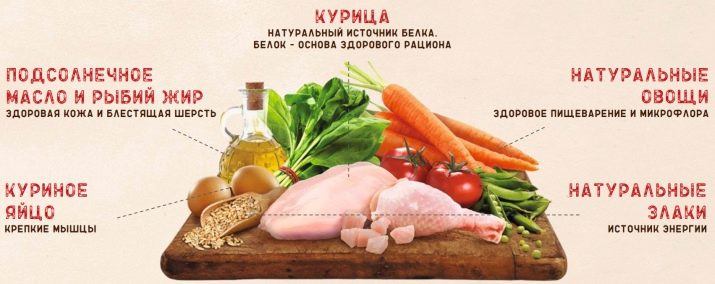
Any food from the host table must be excluded from the power of the pointer.
Dogs are contraindicated in spicy, salty, fatty foods that can adversely affect their health. In small quantities, the presence of butter is permissible in the diet. Under the complete ban of sausages, sausages, tubular bones. To avoid allergies, the dog should be denied peanuts, chocolate, and sweets.
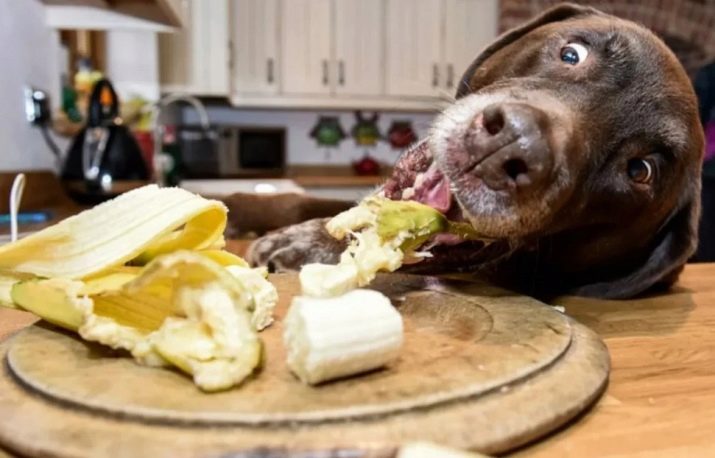
How to care?
Caring for the Pointer is quite simple.Its short coat is replaced gradually, throughout the year, abundant molting can not be feared. Combing is done weekly using a rubber brush. Soft suede or velvet will help to add shine to the coat. An animal is bathed as necessary most often with severe contamination of the body, the appearance of an unpleasant odor.
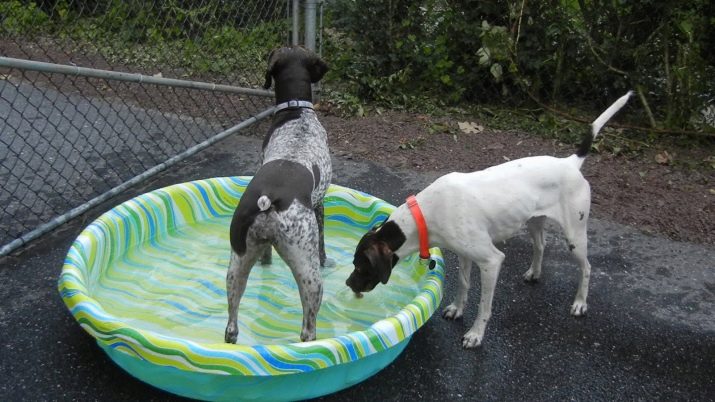
Vulnerable areas of the pointer are the eyes and ears. They can become the basis for the development of the focus of infection. To prevent infection, it is worthwhile to regularly sanitize and inspect, to remove any contaminants.
Flexible ears must be wiped inside with a cotton swab dipped in a special veterinary lotion.
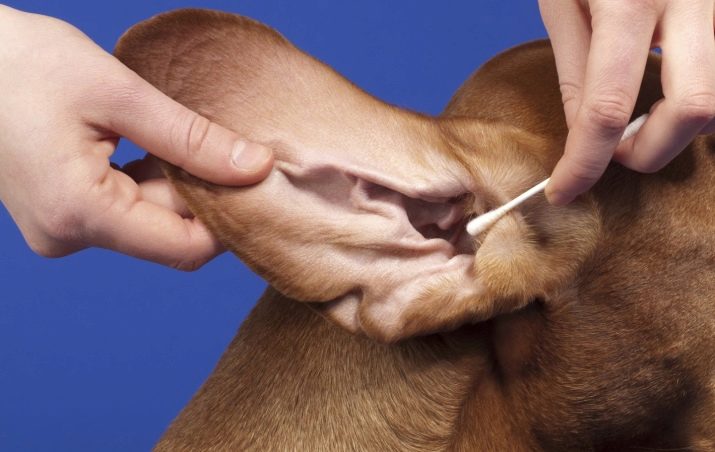
Be sure to pay attention to the health of the dog’s eyes.. Pointers are predisposed to their inflammation, the development of chronic diseases. Third-century adenoma may develop. Daily treatment should include the removal of visible contaminants from the coat.
If redness, profuse lacrimation occurs, consult a veterinarian.
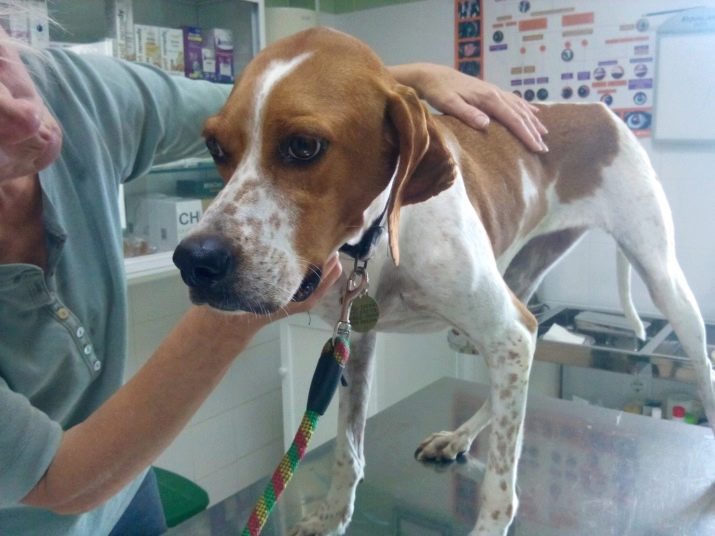
The teeth of the Pointer breed dogs need regular inspection and cleaning. Special veterinary pastes are used. If tartar is detected, professional cleaning is recommended.
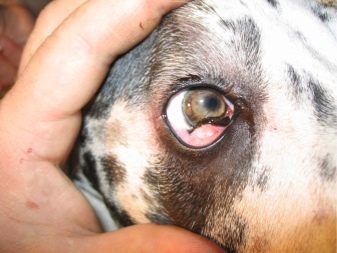
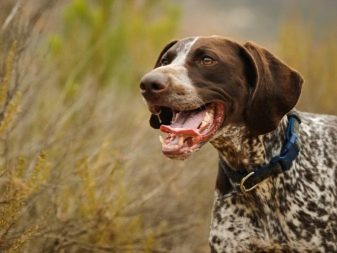
Required clipping of claws, in the summer it is needed less often. In winter, the stratum corneum is worse. Since childhood, it is necessary to teach a puppy to cut a long part of a claw, otherwise an adult active dog simply will not allow this task to be performed. In addition, you need to monitor the condition of the skin.
English pointers are prone to allergies, and dermatitis develops both on food irritants and under the influence of other external factors.
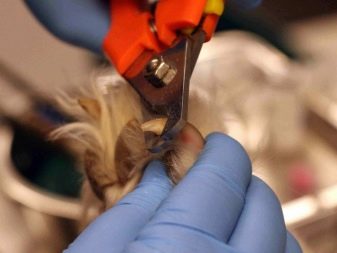
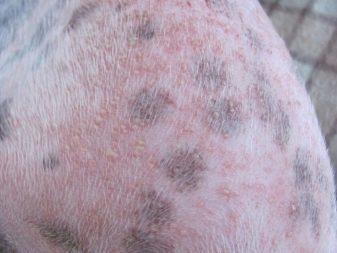
Parenting and training
The unique features of the pointers and their high intelligence allow dogs to easily learn the basic rules of behavior even without additional efforts on the part of the owner. The animal does not need a tough dressing, it knows how to feel the permissible boundaries. A high level of socialization allows dogs to learn many skills by simply copying the behavior of the owner or other pets already living in the house.
Easily adopting useful habits, pointers from puppyhood quickly comprehend the basic commands - their training gives the owner extremely positive emotions.
Still completely abandon the training is not worth it. Poynters are hyperactive by nature, and in the absence of education they can cause serious damage to the environment of the apartment and the property of the owner.
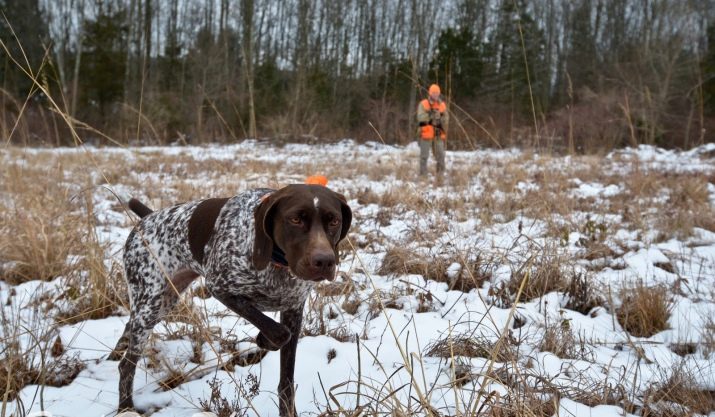
The positive attitude inherent in the representatives of this breed will continue even after training. But the flow of energy will become controllable. In addition, it will be easier for the dog to interact with others, understanding what they want from her.
Poynters are naturally non-aggressive - they always show miracles of patience with children and pets and never show a negative reaction.
But this does not mean that in case of danger the animal will simply allow someone to offend the owner or create a threat to his property. A large and strong dog will successfully neutralize even a larger enemy, show tactical thinking and an enviable fearlessness in the battle.
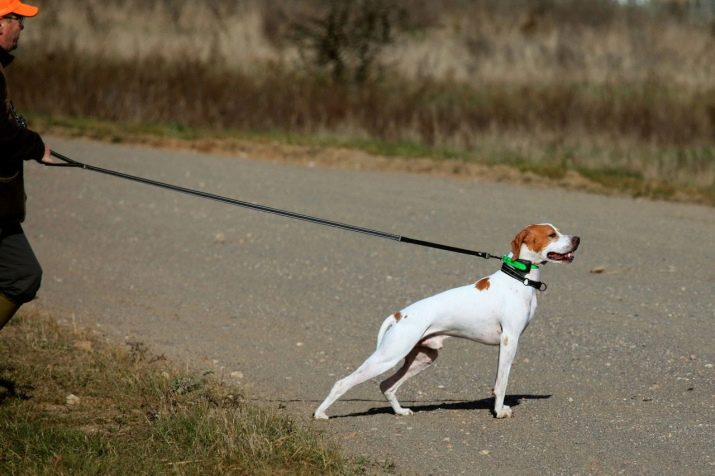
Parenting for hunting
Work skills are inherent in nature. Even if the parents were not taken out for hunting, their puppies are very likely to be able to cope with the tasks assigned to them. The dog makes the first unconscious stance at the age of 2-3 months, at the same age the animal's observation increases. In the presence of a working mother, puppies are willingly taken on trips to the forest with all their litter, and they feel quite confident, adopting the habits of the parent.
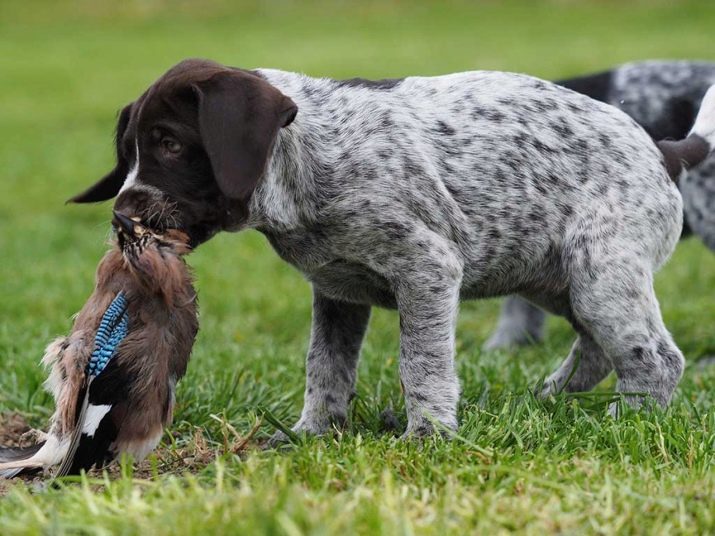
In hunting, pointers demonstrate self-education abilities. If other breeds of gundogs by the age of 6-7 are already losing their skills in the field, these dogs become only better in their hunting qualities.In the process of training the puppy, mainly playing techniques are used, without coercion and the use of physical force. The breed adapts well to work on waterfowl, is able to track and drive the hare without visible effort.

It is important to remember: the pointer is aimed at the pursuit. Moreover, both an animal and any moving object can become its object. Having taken the track, he may not hear commands, stops responding to the owner’s calls. In order to avoid dangerous situations, outside of hunting dogs it is extremely undesirable to lower the leash.
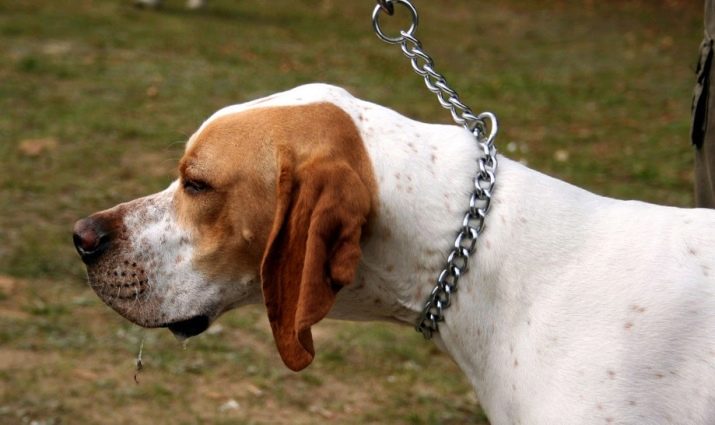
In the next video, you can watch the work of the English Pointer on the hunt.
